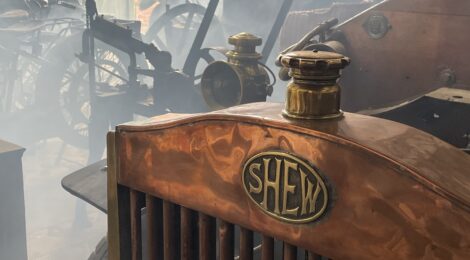
1907 SHEW Car – coaxed back into life…
In the programme of vehicle conservation and restoration, a number of key dates have been identified as being of significance to certain vehicles within the collection. We are seeing some of the trams reach milestones such as Gateshead 10’s centenary this year, or the 125th anniversary of Sunderland 16 now, and the same for Newcastle 114 in 2026. One other date that caught our eye was the 1907 date attributed to the SHEW car, which has been on display in the garage at Beamish ever since it was purchased for the collection. Therefore we had noted that 2027 was of some significance to it, as it would attain 120 years of age, and maybe, it was mused, it might be nice if it was in an operational condition for that date.
The process, therefore, had to begin fairly soon, as it would take some time to determine what the vehicle would need in order for it to be a suitable working exhibit for the museum, in that year, and also what conservation work might be required to improve it’s condition with that in mind. Therefore, Phil and Phil (our machinist/fitters, with considerable experience in road vehicle restoration) began to examine the SHEW with a view to answering some of these questions.
History
Possibly one of the star attractions in the museum’s Edwardian garage, and certainly one that prompts a great deal of questions, is the SHEW car – the name alone provoking comment and curiosity, conspicuous as it is on the brightly polished radiator. When explained that SHEW stands for Seaham Harbour Engine Works, the questioner is probably little clearer on the subject matter, a small car with unusually flamboyant seats, a care worn appearance and very prominent radiator. However, this perhaps misses the point of a very important piece of local history, perhaps most significant as a ‘might have been’ rather than in its own sense of technological or social place in the collection.
In 1907 two articulated vehicles were manufactured at the Burnt Tree Engineering Works in Dudley, to a patent for ‘steering of motor cars’ submitted by Thomas Parker in 1897. The chassis was in two sections, pivoted in the middle and with a steering rack that created the turning action around the central pivot, much like modern dump trucks function.
Of the first two vehicles – one was fitted with a four cylinder White and Poppe petrol engine, the other (the SHEW) a two cylinder Forman engine. The front portion is self contained – the engine, gearbox and drive all being located here (note the drive chain inside the front wheel) and the rear section essentially a trailer. Great manoeuvrability was claimed and was presumably the purpose of this photograph! The SHEW is probably the second of the vehicles, the first being used as a taxicab in London for some months. As a result of this success the Sedan Auto-Car Syndicate was created to develop the idea.
The Sedan Auto-Car Syndicate purchased the Burnt Tree works in late 1907 and further developed the Parker chassis principle. The SHEW at Beamish is probably their second vehicle, perhaps started prior to their purchase of the works, but by now part of their output. They sought a production partner for the design and turned to the Seaham Harbour Engine Works (SHEW) who had established themselves with a reputation for construction both railway locomotives and steam lorries (known as Londonderry Waggons). After a change in personnel, the works was looking for alternatives to steam construction and made some speculative attempts to establish a motor vehicle range were therefore made. Enter the Sedan Auto-Car Syndicate who commissioned SHEW to produce motor vehicles to the Parker patents.
Below: A clear illustration of the centre-pivoting vehicle produced by the Sedan Auto-Car Syndicate. Whether this is the SHEW requires further research as there are clearly few components in the view that directly compare with what remains today. However, it is more than likely that once the vehicle arrived in Seaham, and was rebuilt into a more conventional form, then the engineers used whatever components and parts that were available to them to achieve their objective.
The Forman engine vehicle was dispatched to Seaham, arriving in 1908. Fitted with a 16HP engine and artillery wheels, its intent was probably as a commercial vehicle rather than passenger carrying one. The livery is thought to be green/black with white lining.
Three vehicles were manufactured at Seaham, one being photographed and supplied to the Coalite Company, another in van guise also being photographed by the contemporary motoring press. Of note for these was the radiator set up behind the engine (where the bulkhead would be fitted) – very similar in appearance to that now fitted to the front of the preserved SHEW – suggesting that this at least is a Seaham component.
SHEW used the museum’s vehicle as a works hack (deliveries and collections) whilst they evaluated it. It was found ‘wanting’ and so in 1910 the chassis was made ridged, conventional Ackermann steering was fitted, the drive was moved to the rear axle, the bonnet modified and a seat fitted that may originate from a horse drawn vehicle of the period. The registration was a Sunderland allocation and would have been required for the SHEW’s duties around Seaham (where it was involved in an accident with a bicycle, for which E. Saunders, the driver, was fined £5!).
Below: These two views were taken at Wynyard in 1956 and show flat platform behind the front seat. The repositioned radiator has left a gap between the radiator and bonnet, and it is possible/probable that the seat shown was recovered from another vehicle, possibly horse-drawn. It carries a livery inconsistent with a motor car of the era, and is clearly quite aged and tarnished. Some of the moulding beneath it doesn’t marry up with that on the car either – again suggesting that it was something fitted for convenience, possibly at Wynyard rather than Seaham.
With the demise of both the SHEW (works) and Sedan Auto-Car Company around 1912, after the production of only three more vehicles, the car was used until WW1 broke out in 1914, when it moved to Lord Londonderry’s estate at Wynyard Hall (sources differ on the date – some state the move was 1912). On the estate (Londonderry owned the controlling share in the Seaham Harbour Dock Company plus extensive coal and railway interests) the car (as we shall now refer to it) continued its general purpose role, complete with a tool chest on the rear platform. It was probably in store by the time of the outbreak of WW2.
In 1956 Fred Baxter, a Model T Ford collector from Harrogate, became aware of the SHEW in an outbuilding on the Londonderry estate at Wynyard Hall. He alerted George Kendrew from Stockton-On-Tees, who obtained the car and set about a rebuild to enable it to participate in the 1957 London to Brighton run – a challenge set and successfully met. In carrying out this work, Mr Kendrew carried out a number of modifications – the most noticeable of which included the cut down wheels (in order to take a Model T Ford rim and pneumatic tyre), replacement of the rear deck with a seat (reproduced from the front seat?) and removal of some detail trimmings. The car was finished in a red and white colour scheme (though following the colour panels evident on the original coachwork) – Mr Kendrew apparently being a Sunderland FC fan! The striping does echo that seen in the photos at Wynyard above, however.
Mr Kendrew claimed the origins of the car as 1904, but makers marks on the chassis (Rubery, Owen and Company) can only date from October 1905, the engine dates from 1906 and the BR 211 registration is also 1906. The wheel hubs have cast hubcaps, title ‘Sedan’ – the Sedan Auto-Car Syndicate as we saw earlier dates from 1907, so despite some dating to 1906, the origin of the car is much more likely to be 1907. Thus it was ineligible for the VCC run though this revision to the date is of little consequence to its importance to Beamish in terms of local history and appeal.
Below: Some images showing the SHEW during its rebuild and subsequent outing on the London to Brighton run. It would be fair to say that it is not the most attractive of vehicles, and the work carried out in the 1960s did little to improve this.
Below: The SHEW is seen whilst in Mr Kendrick’s ownership – note the Veteran Car Club plate, and date 1906 carried on this.
The SHEW was purchased at auction for the museum in June 2003. It had been sold to a garage in Leeds in the 1960s and onward to a private collector in 1967. Its whereabouts had been unknown until it reappeared for sale at Cheffins in 2003. It was immediately placed on display within the Edwardian Garage at Beamish, and has only ventured out (on static display) on very few occasions since then.
On July 4th 2015 the SHEW was taken to Seaham to take part in the classic car show there, this being the first time in the town for a century! This precipitated thoughts towards a ‘project’ around the vehicle.
11th August 2025
Below: As noted in the opening paragraph, the re-activation of the SHEW has been an action in the restoration/vehicle programme for a little while. After inspection, checks and establishing exactly how it worked and what each part did (or didn’t) do, fitting an alternative magneto, introducing some air to the oil system and installing a temporary fuel supply with pump, the SHEW was successfully started – albeit very very smokily.
Below: The oil feed is very reminiscent of that fitted to some steam locomotives – it is seen here behind the fire-wall/bulkhead, with an airline connected to allow it to be pressurised slightly. In practice there would have been a manual pump to achieve this role – an early candidate for overhaul. Also visible is the battery, which provides an electrical supply to the fuel pump – the ignition is separate and the spark is generated from a temporarily fitted magneto.
Below: The magneto, a temporary arrangement whilst the original is overhauled.
Below: The SHEW made its first move, to pull clear of the garage display and allow the gate etc. to be refitted. The smoke can clearly be seen to be something of a problem at this stage.
Below: Making such a smoky departure that it set the fire alarms off in the buildings around, the SHEW breaks cover under its own propulsion for the first time since the early 1960s.
Below: The first step has been to drive the SHEW on the roads at the museum and determine how it performs and what work is needed to develop it into a reliable vehicle for demonstration around the museum.
For many years the SHEW has been left untouched as it was felt that the work to conserve/restore it was beyond the facilities the Museum had at the time. In terms of what process is followed, some of the options include:
- Completely restore the car to the condition it may have been in when built in 1907 including reinstatement of the Parker steering (much of this was retained when the Ackermann steering was fitted). The problem with this is that we don’t know with any certainty what it looked like and to do so would entail removal of quite a bit of surviving material
- Restore it to the condition it might have operated at Seaham and later Wynyard in, as a single row of seats, platform rear body, Ackermann steering retained and solid tyres and original wheel diameter reinstated. The advantage of this is that we have photographs of it at this stage in its life to base the work on
- Re-restore its restoration appearance per the 1957 work as an example of what was done in early preservation and as a feature on the Museum’s 1950s developments.
- Leave it completely alone and retain it on display in the manner in which it currently appears.
Taking the above on balance, the preference would be to overhaul the SHEW mechanically, reinstate the features evident in the 1956 photographs as these essentially reflect its appearance in the 1910s/20s, paint it in a subdued colour scheme and reflect the story of a motor car production idea that didn’t endure in Seaham, as well as representing the vehicle’s life at Wynyard. This is least intrusive to the remaining fabric of the car, can follow photographic evidence of its condition and gives a very strong local story to interpret at the Museum. The aspiration would be that it be in full working order, safe to operate and respectful of its originality and age. It will therefore continue to be something that is of great interest to visitors and enthusiasts alike.
The one challenge that we will face in this is whether we retain the pneumatic tyres, or attempt to refit solid tyres. Cost may determine whether this is achievable, and it may be that, with a detailed Conservation Management Plan, all of this work can take place over an extended period of time. It’s nearly 120 years old after all, so a few more years won’t really make much difference in that respect! The process of research will be ongoing, though much invigorated by the working-nature of the SHEW adding a new dimension to our understanding of it.
Below: A fragment of what may be original paint – the hunch always has been that it was green, at some point at least, and this may provide evidence sufficient that we can consider a muted green finish for the conserved vehicle.
Below: After running tests, the carburettor was overhauled (the trumpet being the air intake). This was fully dismantled, cleaned and repaired. By carrying out jobs like this, the key ingredients of a running petrol engine – fuel and spark – can be more reliably achieved.
Below: A close -up view of the cleaned and repaired lubricator for the engine – the glass tubes allow the rate of oil delivery to be observed and the rate of this can be adjusted using the ferruled fittings at the top of each of the four feeds. The patina on this component is wonderful and it is clear that we must take great care to retain this in the work that is being carried out.
Below: With the oil feed overhauled, its pressurised supply from the exhaust manifold could be re-connected – as seen in this view.
Below: Beneath the front seat is a panel that can be removed to reveal the original pivot, around which the front and back half of the SHEW originally rotated to impart the steering influence on the vehicle.
Below: The SHEW is shown outside the garage. It will remain based here, except when work is being carried out on it, but it is certainly satisfying to know that it has now joined the working collection, rather than being a purely static exhibit. Phil and Phil continue to explore the workings of the SHEW, its performance and look for reasonable and curatorially responsible elements to overhaul and improve.
Photos in this post by Phil Doran, Paul Jarman and Phil Smith. Archive views from the Beamish Archive and research from the vehicle files and Rory Sinclair


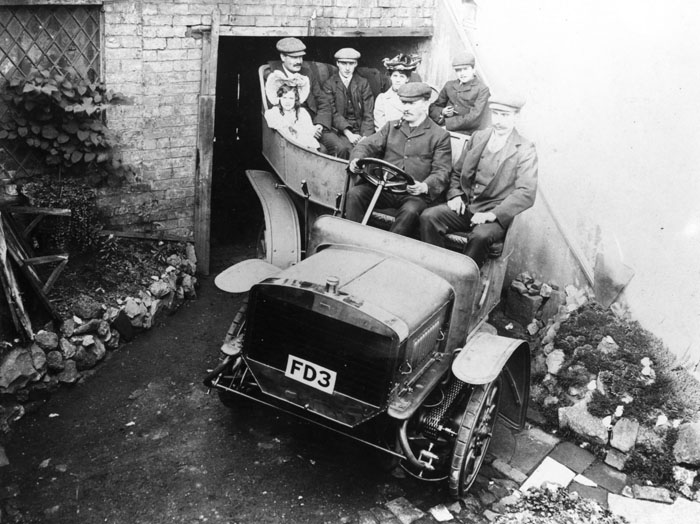
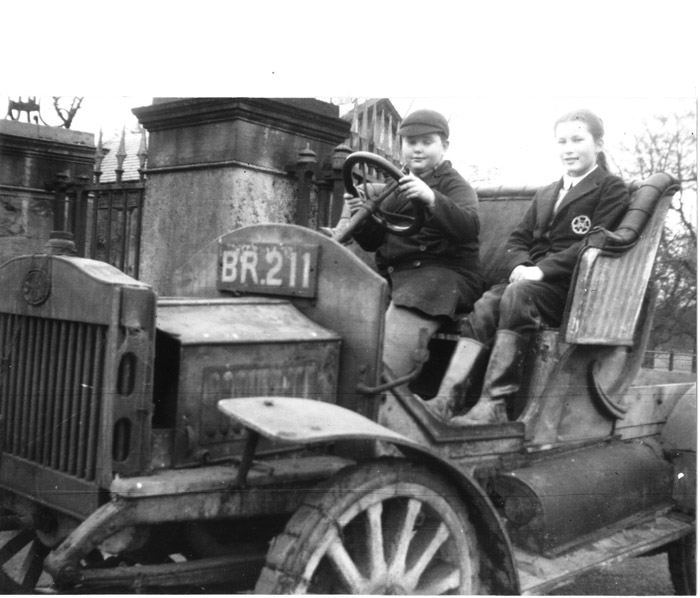
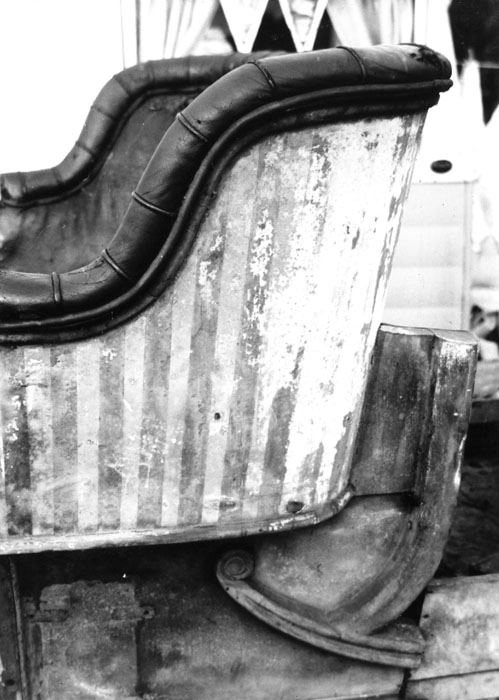
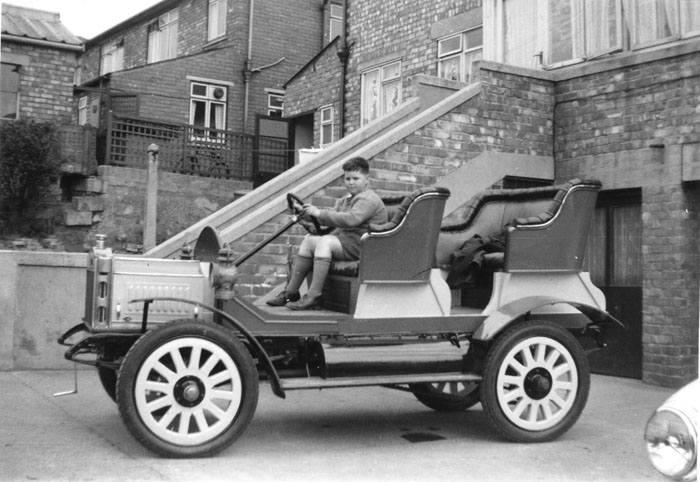
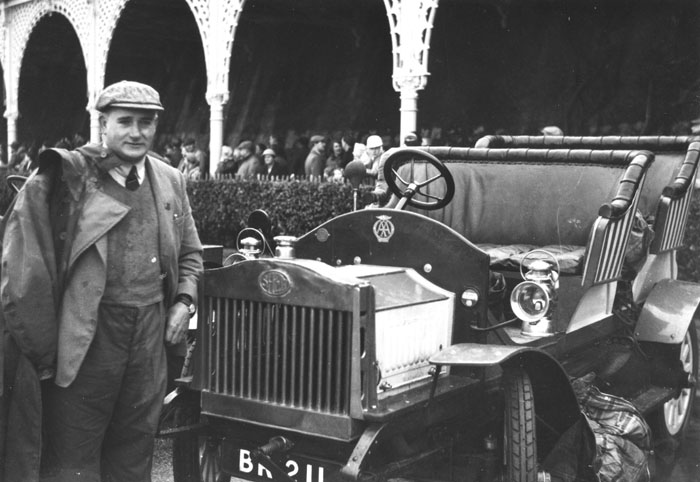
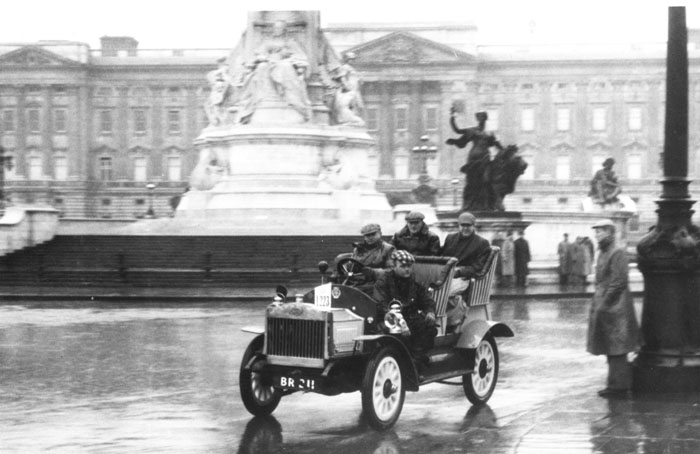
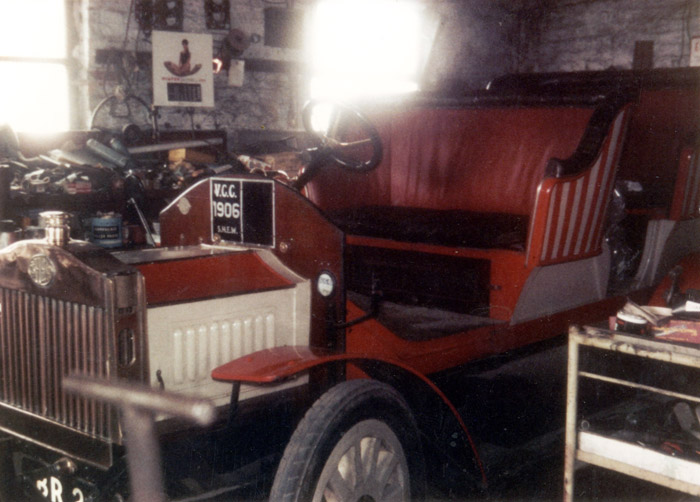
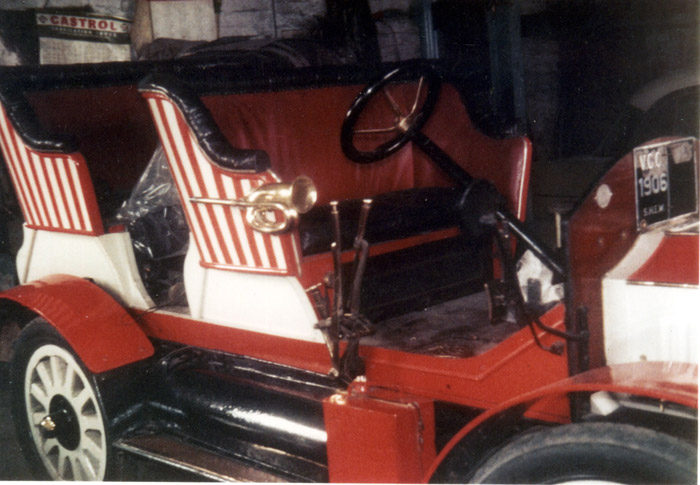
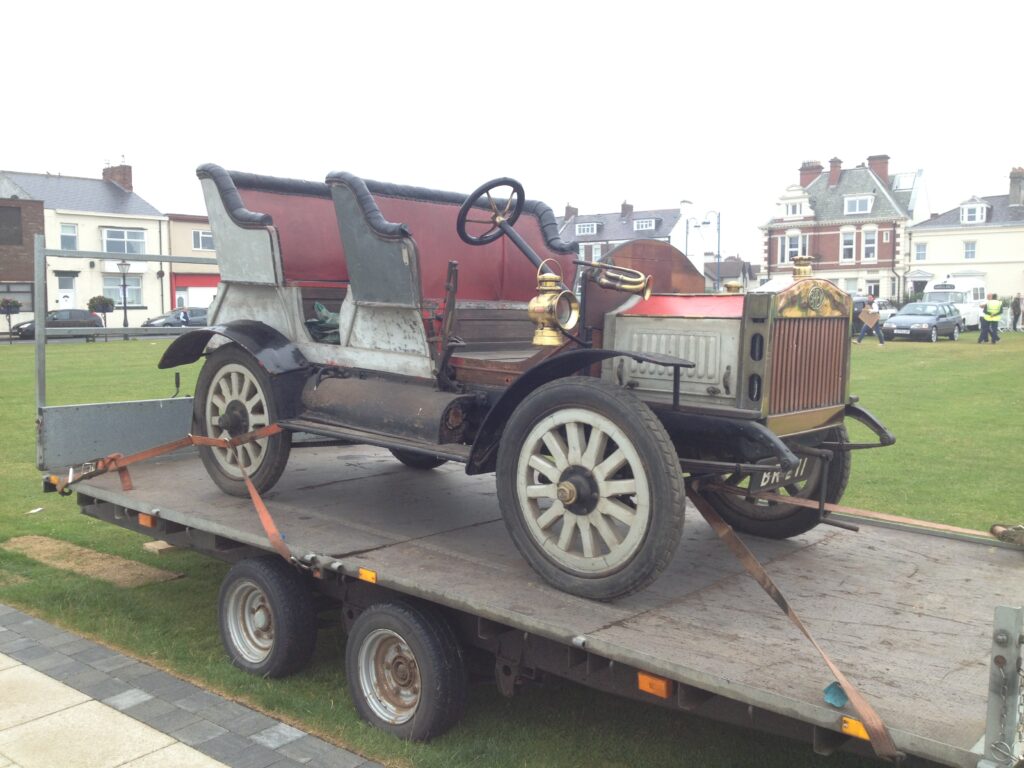
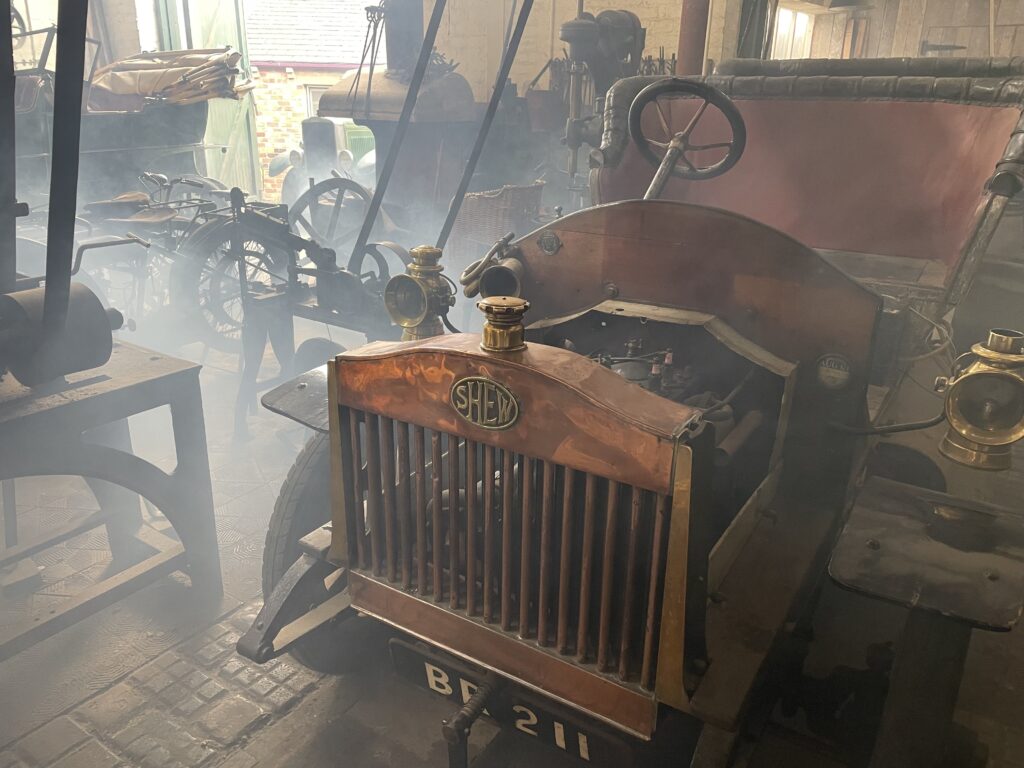
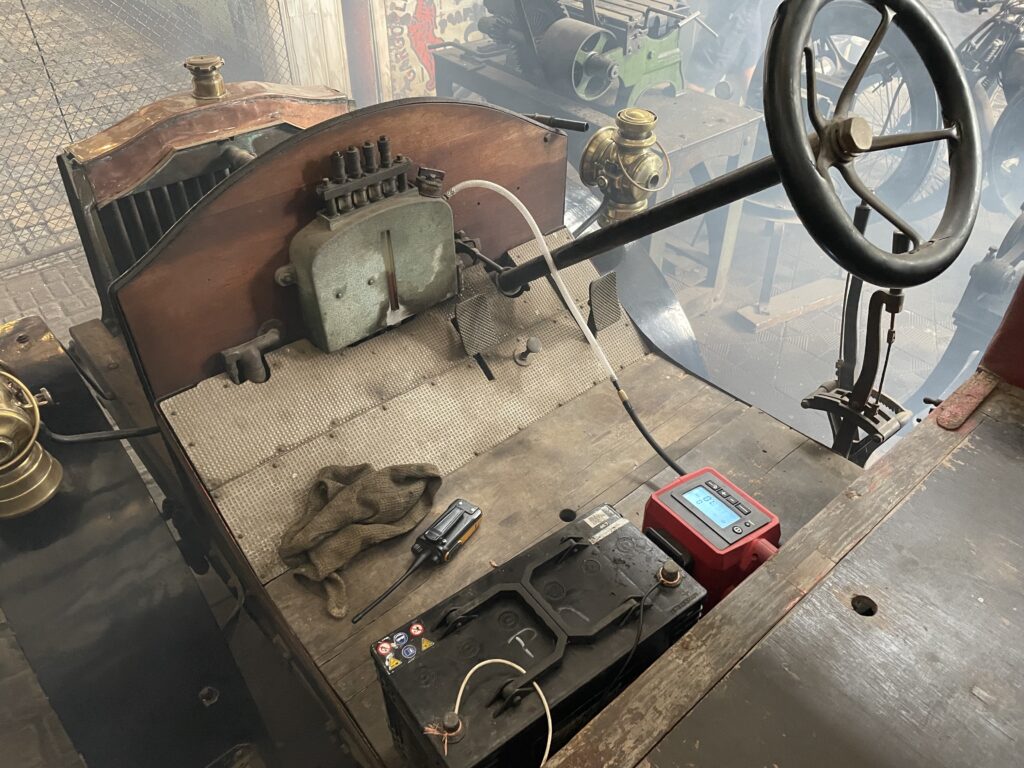
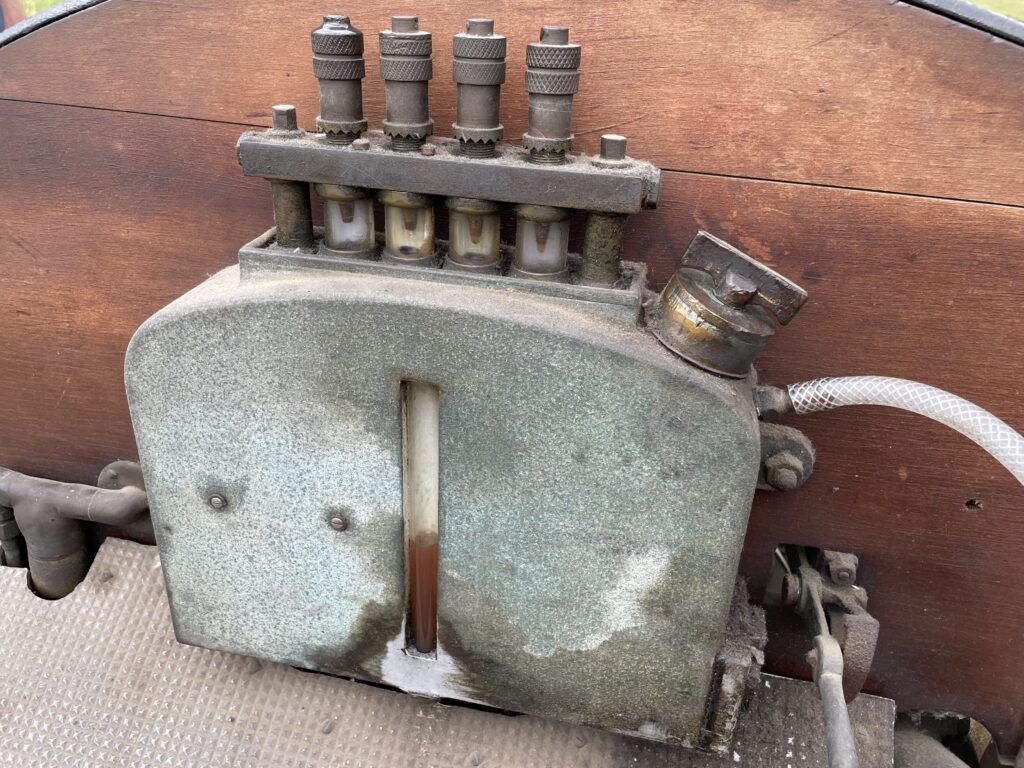
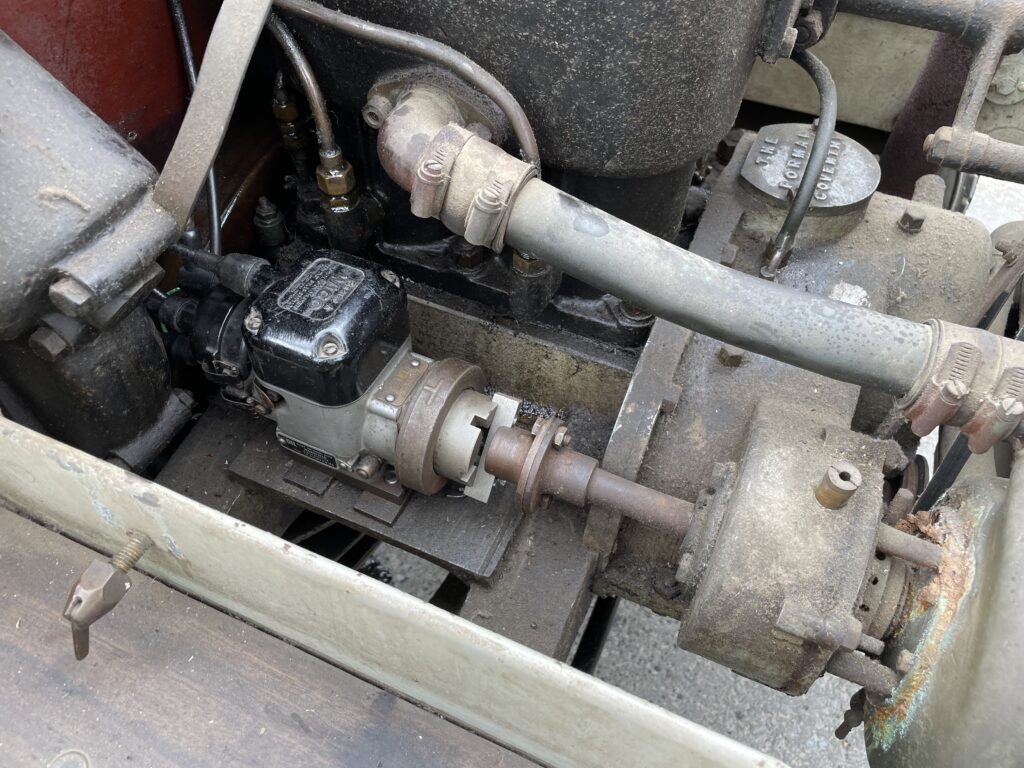
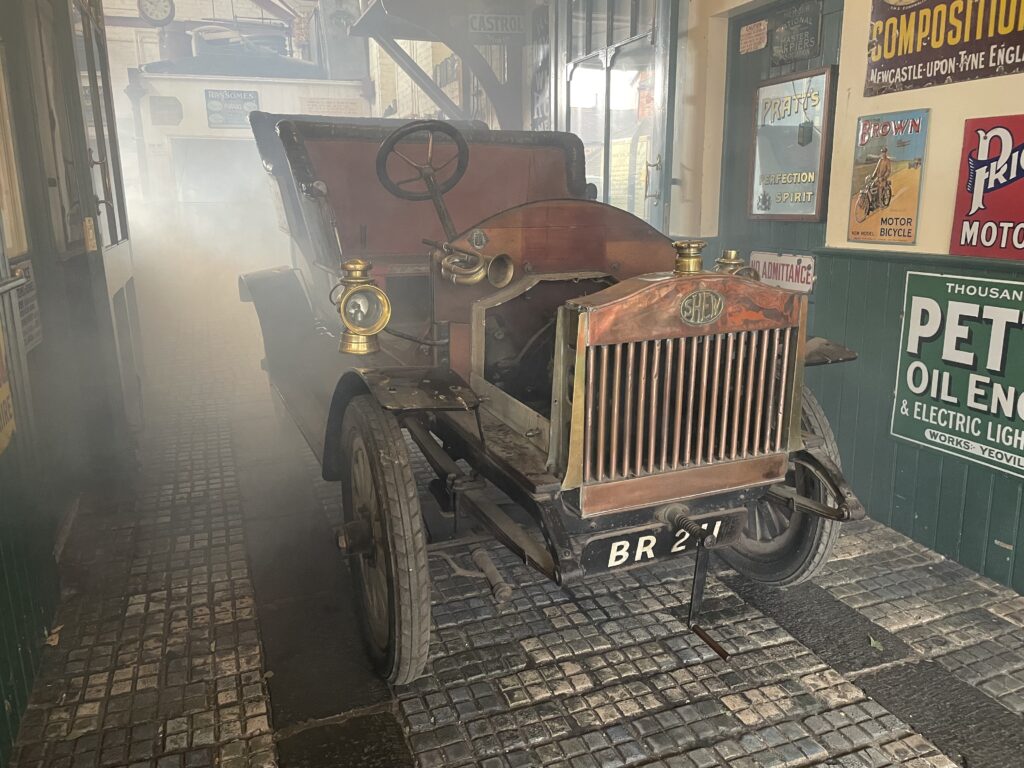
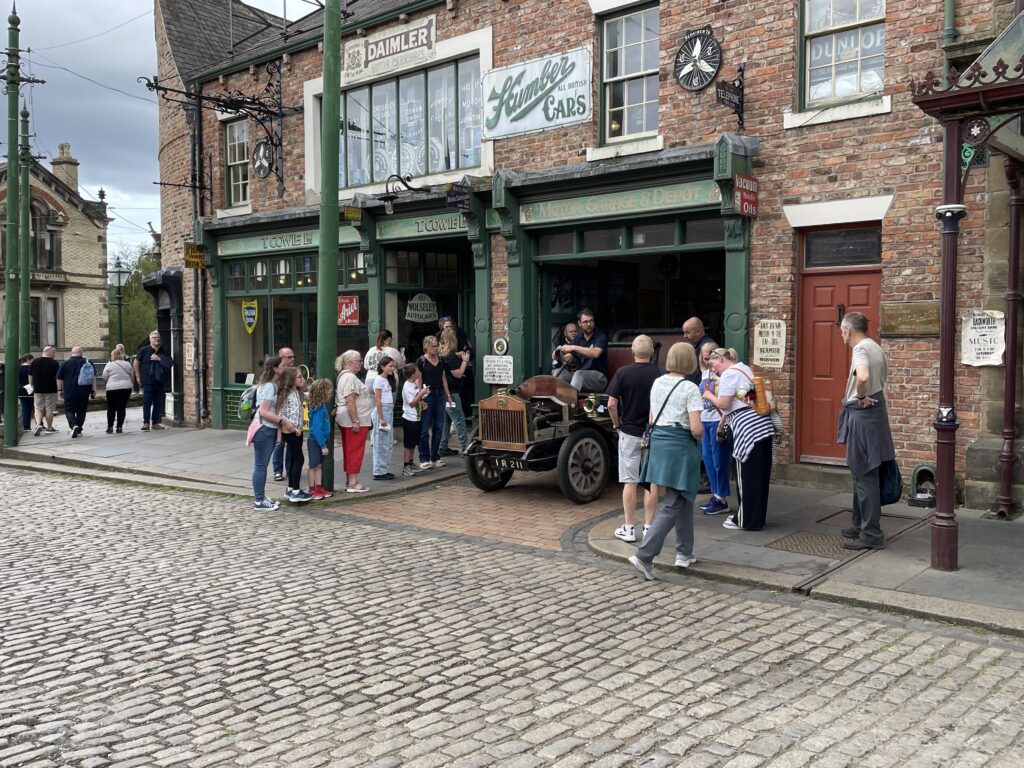
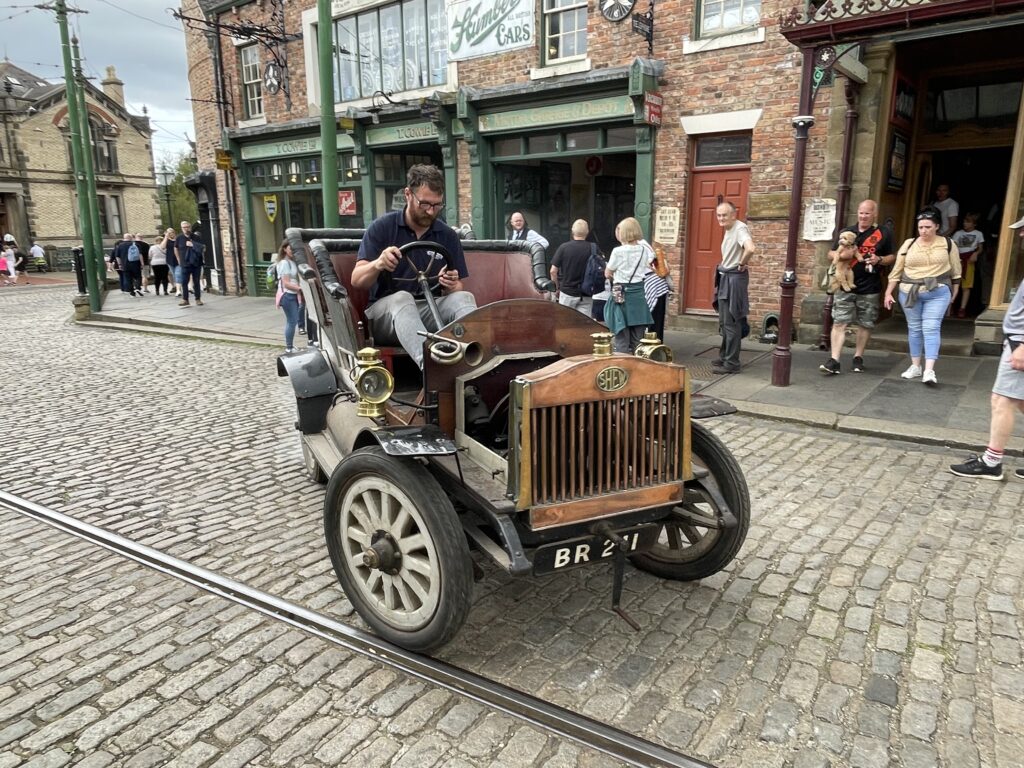
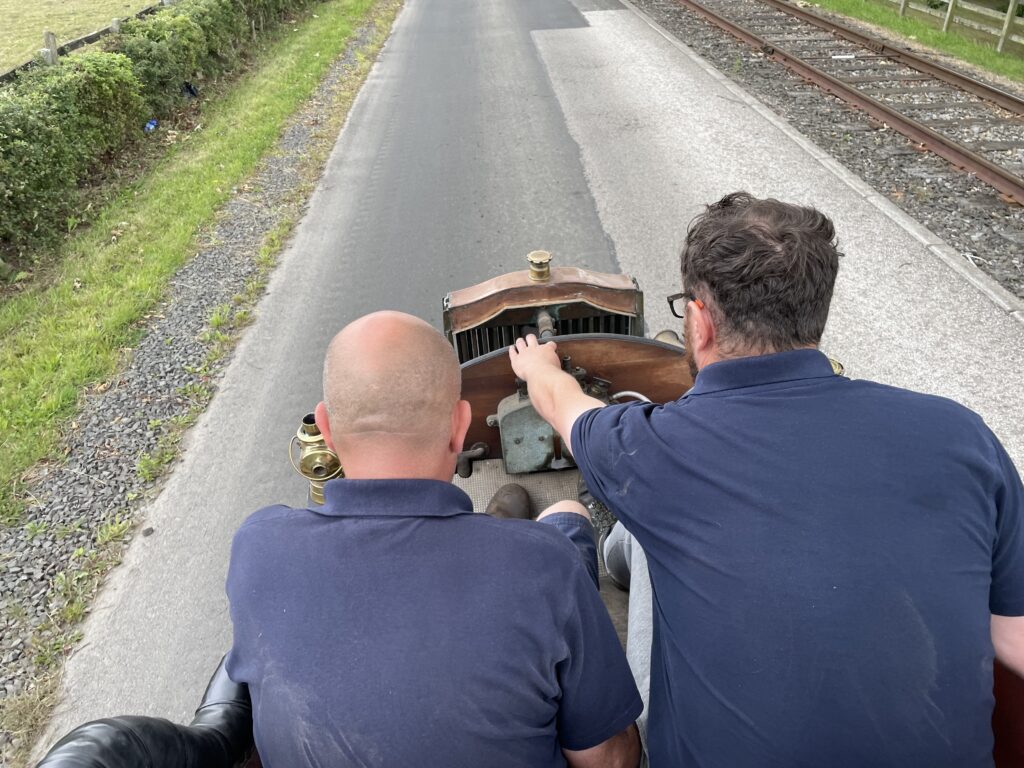
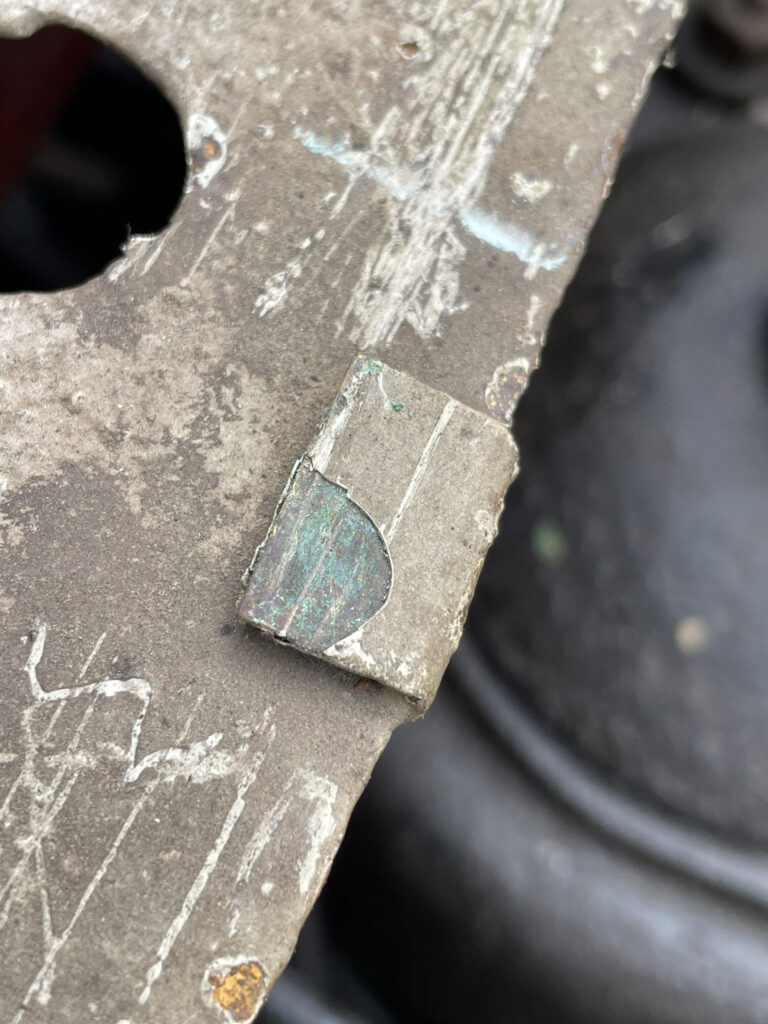
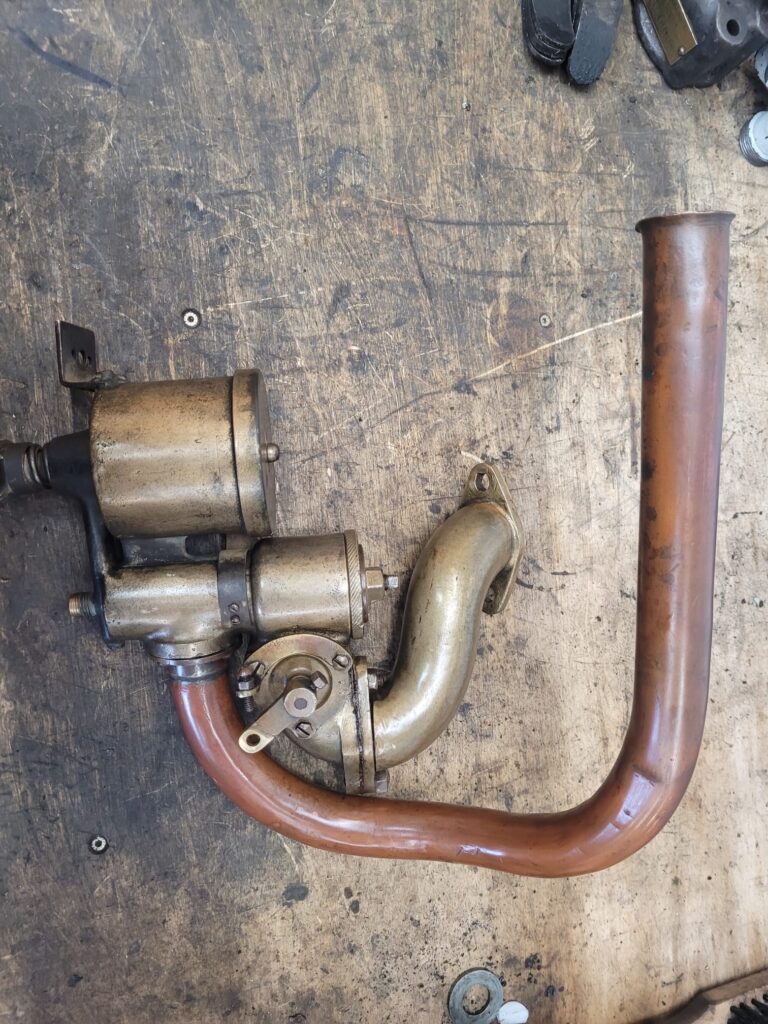
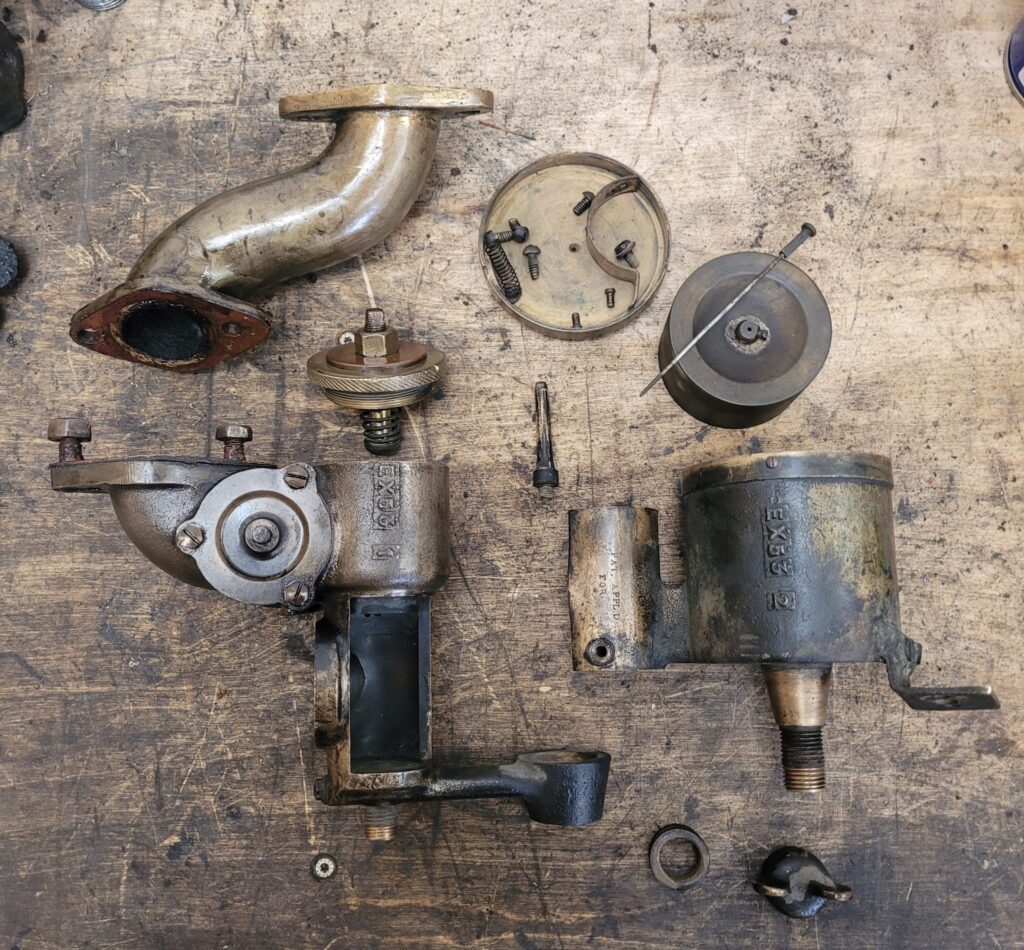
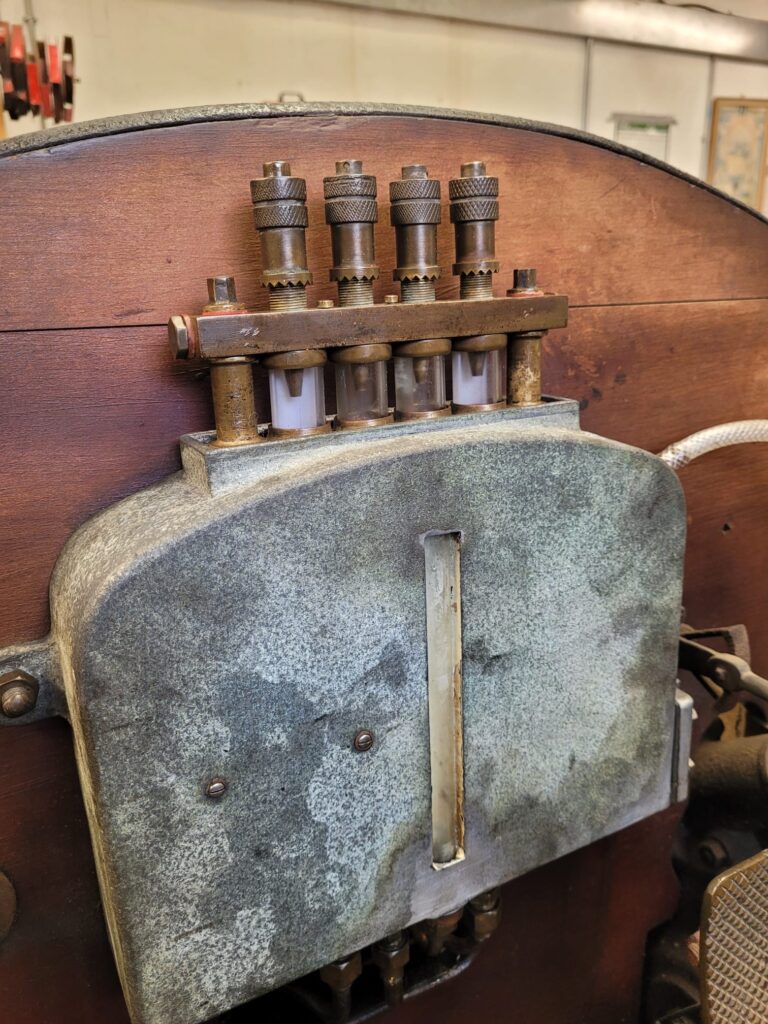
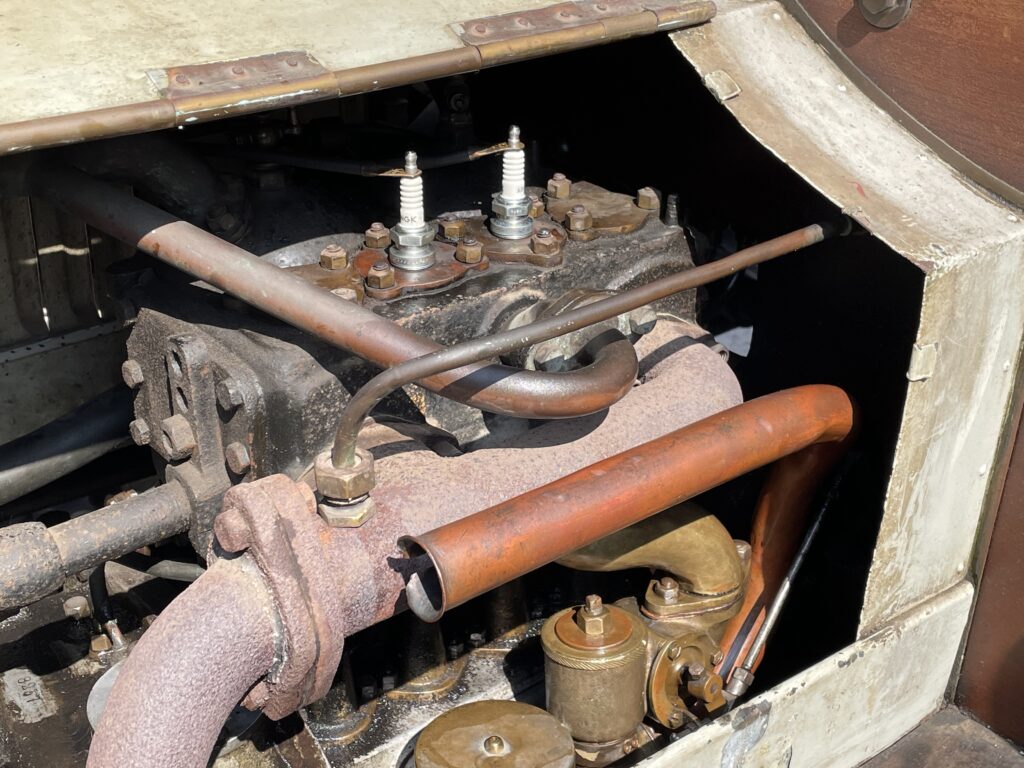
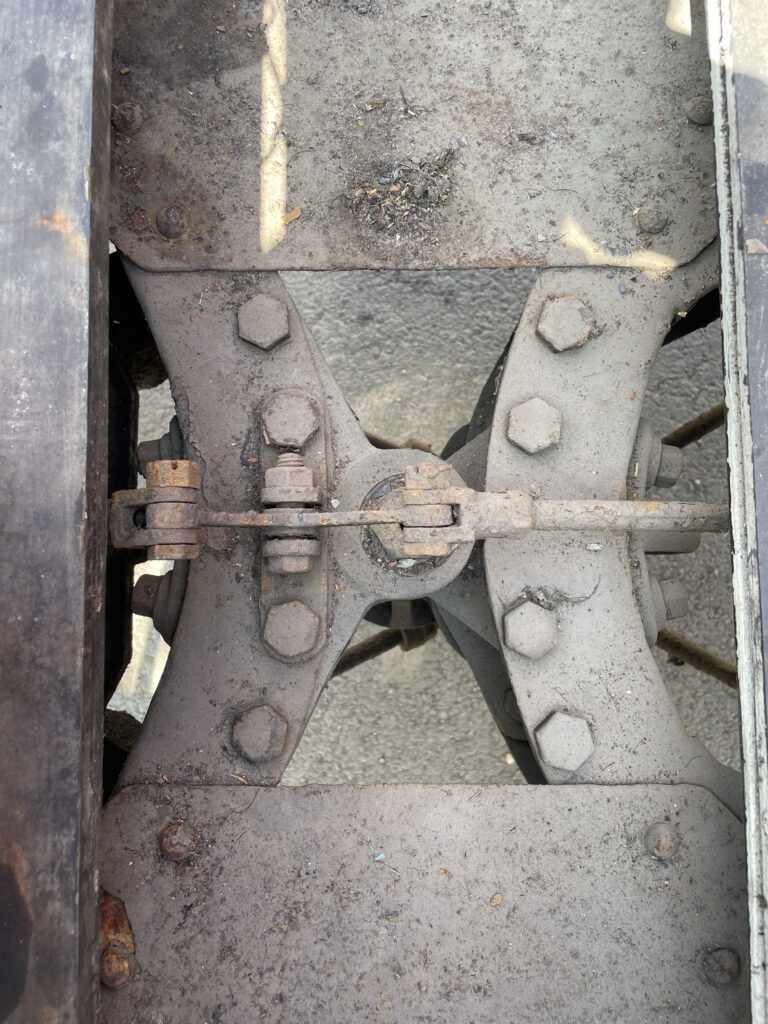
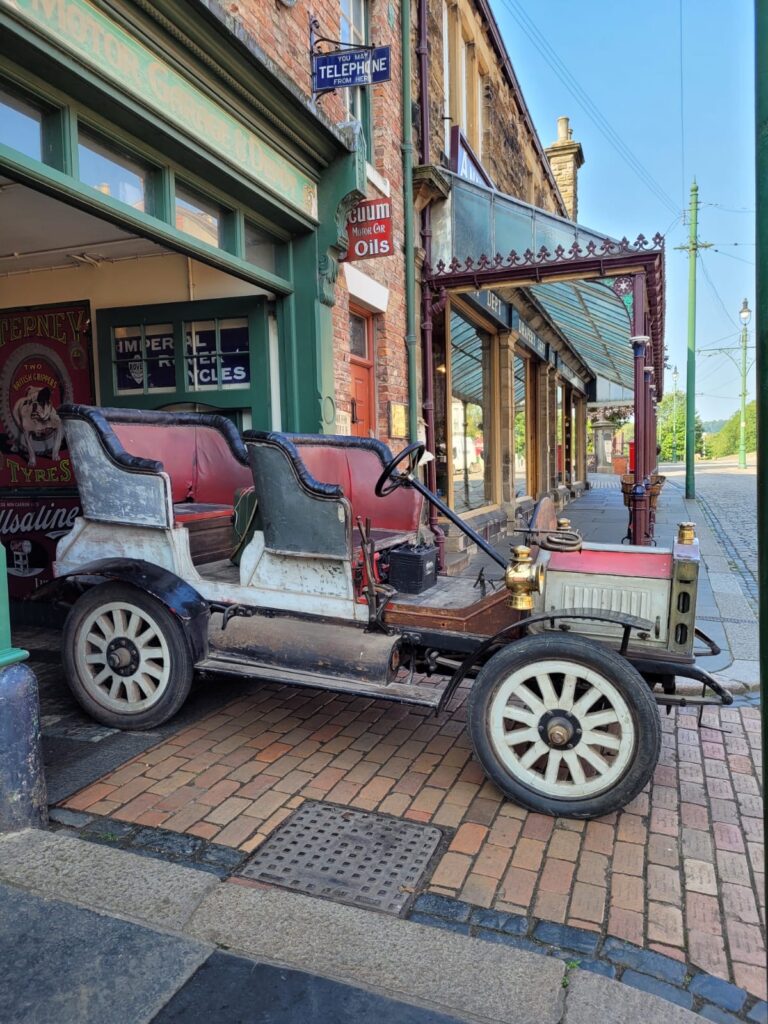





Fantastic to see it’s in the process of restoration. We have been coming to Beamish for many years but never thought we would see the shew move under it’s own power.